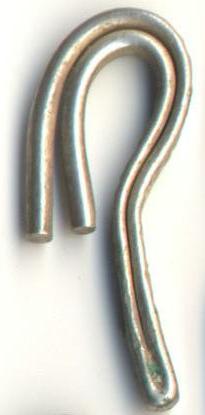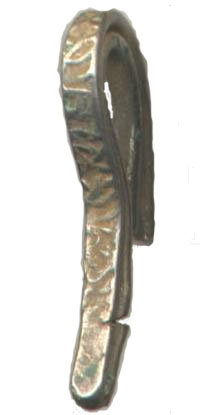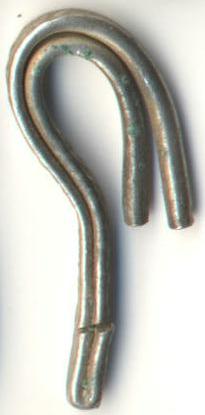


| These coins with a shape like a fish-hook, bear no legend, or at best poor imitations of Arabic letters; they are usually somewhat thick and short, frequently shows one or more cuts at the bend, apparently made to test the purity of the metal. |

|

|

|
During the Portuguese period larins enjoyed widespread use in Ceylon. The silver larin coinage, which originated in the Persian Guff, was used extensively from that region around the coast of the Indian Ocean as far as Lanka during the period 16th and 17th centuries. Larins used in Lanka were bent into a "fish-hook" shape whereas those of other regions were straight. Larins actually produced in Lanka bore either imitation Persian inscriptions or meaningless designs: though specimens bearing western inscriptions are reported to have also been produced. Larins of more northerly origin that reached Lanka in the course of trade tended to be bent into "fish-hook" shape when they later subserved the currency needs of the island.
Robert Knox in Lanka between 1659-1679 write in
Historical Relation of Ceylon (Pt. III, Chap VIII)
"There is another sort (of money), which all People by thr king's
Permissin may and do make. The shape is like a fish-hook, they stamp
what mark or impression on it they please. The silver is purely fine
beyond pieces of Eight. For if any suspect the goodness of the Plate,
it is the Custom to burn the Money in a fire red hot, and so put it in
water: and if it be not then purely white, it is not Currant Money."
Fra Paolino da S. Bartolomeo in Lanka between 1776-1789 writes in
Voyages to the East Indies, (English trans., 1800, p. 86)
"The King of Kandy has introduced in the island of Ceylon a kind of
money, which consists of a piece of silver wire rolled up like a wax taper.
When a person wishes to make a purchase he cuts off as much of this silver
as is equal to the price of the article."
Text from
* Ceylon Coins and Currency By H. W. Codrington. Colombo 1924
Page 164 Chapter XII Muhammadan - Plate 163.
* Oriental Coins CE 600 - 1979 by Michael Mitchiner (#2157-2162)
The Larin was scanned at 300dpi and the images are displayed at 200dpi.
The Larin was purchased in June 1998 from an antique shop in Kandy.